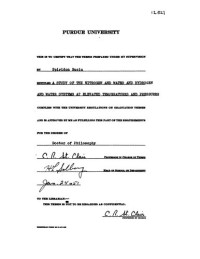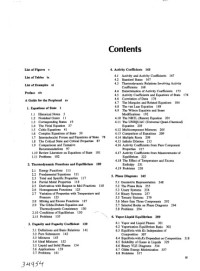
The Pressure Reversal of General Anesthesia and the Critical Volume Hypothesis
K. W. Miller, W. D. M. Paton, R. A. Smith, E. B. SmithThis is a simple copy from a textbook
The anesthetic potencies (ED50) of four gaseous anesthetics and five liquid anesthetics were first determined in newts, using the abolition of righting reflex measured by the rolling response at 20°. The following results were obtained: N2O, 0.69 atm; N2, 21.5 atm; SF6, 1.82 atm; CF4, 11.0 atm; CHCl3 0.89 mM; butanol, 16.7 mM; pentobarbitone sodium, 0.85 mM; halothane, 0.39 mM; ether, 25 mM. The ability of elevated pressures to antagonize the effect of these anesthetics was then studied. For the liquid anesthetics, a graded response to pressure was observed and the reversibility of the antagonistic effect was demonstrated. Dose-response curves were obtained for the interaction of pressure with the gaseous anesthetics, and, from these, ED50 values at various pressures have been interpolated. The data are used to compare the Meyer-Overton and the critical volume hypotheses; the latter not only is consistent with the data but also provides explanations for the antagonistic phenomenon and the lack of anesthetic effect for helium, neon, and hydrogen. The critical volume hypothesis is developed for three solvent model systems, from which estimates of the compressibility of the site of action are made.
https://molpharm.aspetjournals.org/content/9/2/131
ISSN 0026-895X, 1521-0111
The Pressure Reversal of General Anesthesia and the Critical Volume Hypothesis
K. W. MILLER, W. D. M. PATON, R. A. SMITH and E. B. SMITH
Molecular Pharmacology March 1973, 9 (2) 131-143;
Categories:
Volume:
9
Year:
1973
Edition:
2
Publisher:
ASPET
Language:
english
Pages:
13
Series:
Molecular Pharmacology
File:
PDF, 4.22 MB
IPFS:
,
english, 1973
 Amazon
Amazon  Barnes & Noble
Barnes & Noble  Bookshop.org
Bookshop.org  File converter
File converter More search results
More search results More benefits
More benefits 










